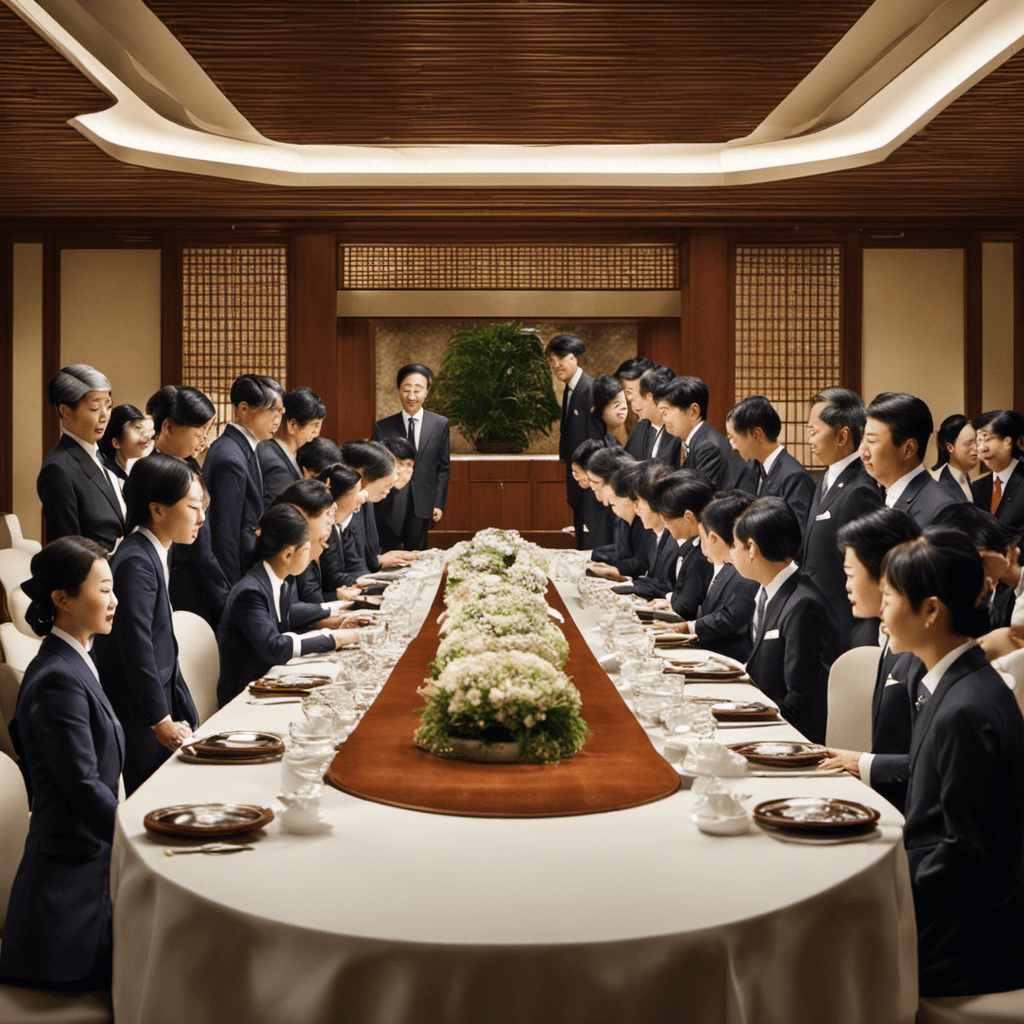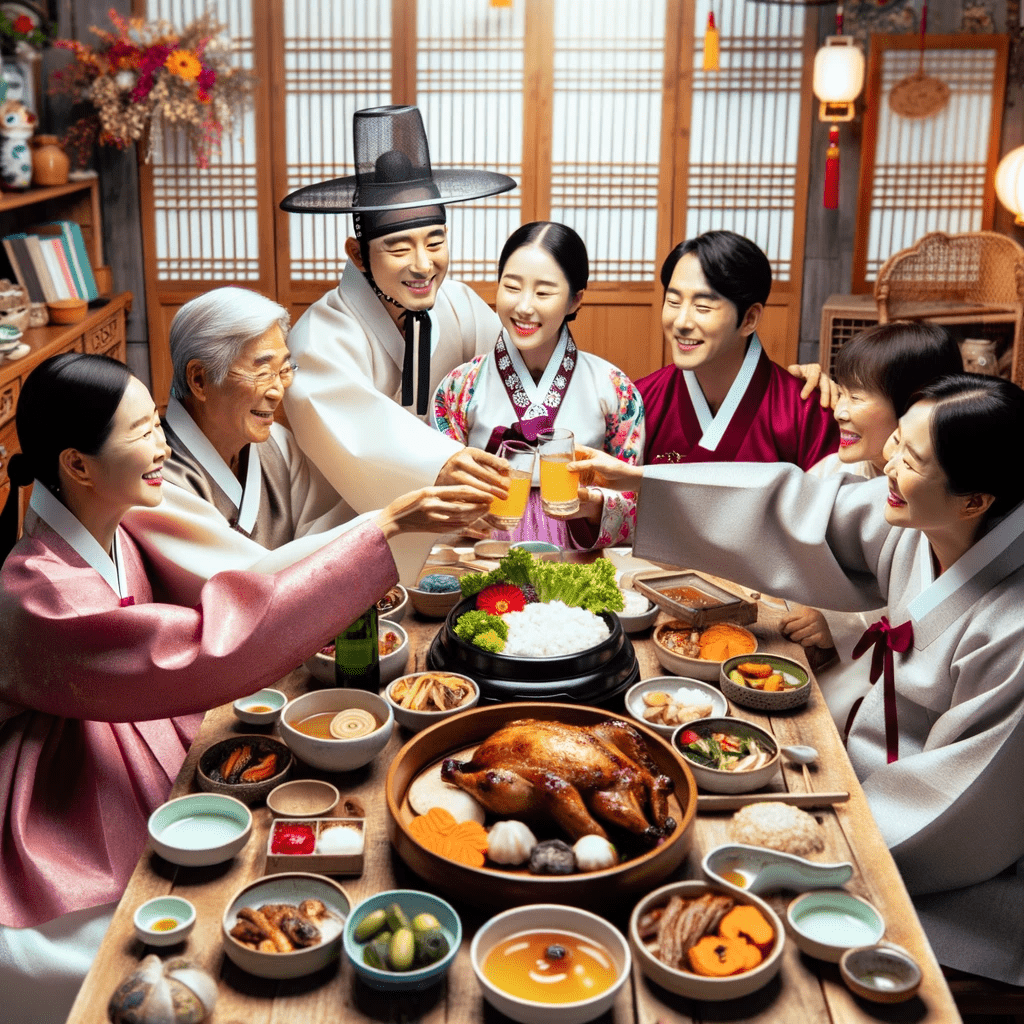Greetings are a vital aspect of Korean culture, embodying respect, politeness, and social connections. To navigate these interactions with confidence, it is essential to understand the most common Korean greetings used in formal and informal settings.
In this article, we will delve into the nuances of formal greetings like ‘안녕하세요’ and ‘안녕하십니까,’ as well as informal greetings such as ‘안녕’ and ‘밥 먹었어요?’ By mastering these greetings, you can effectively communicate and engage with native Korean speakers in various contexts.
Key Takeaways
- The most common formal way to say hello in Korean is 안녕하세요 (annyeonghaseyo), while the most formal way is 안녕하십니까 (annyeonghasimnikka).
- Informal ways to say hello in Korean include 안녕 (annyeong), 여 보세요 (yeoboseyo), 어, 왔어? (eoh, wasseo?), and 밥 먹었어요? (bap meogeosseoyo?).
- A neutral way to say hello in Korean is 안녕하세요 (annyeonghaseyo), which can be used in various situations.
- Other resources for studying Korean include Duolingo, 90DayKorean, Aprender Coreano Rápido / Fácil / Eficaz, Gramática Coreana para Conversación, and the free online course at Yonsei University.
Formal Greetings in Korean
While there are various ways to greet someone in Korean, it is important to note that the most formal way to greet in Korean is 안녕하십니까 (annyeonghasimnikka), which is commonly used in formal settings. This greeting is a sign of respect and is typically used when addressing someone of higher rank or in professional situations. It is important to use this formal greeting to show politeness and to convey a sense of professionalism.
On the other hand, there are also greetings for casual situations, such as 안녕 (annyeong) or 여 보세요 (yeoboseyo), which can be used among friends or in informal settings. These greetings are more relaxed and friendly, reflecting a more casual tone in the conversation.
Understanding the appropriate greetings for different settings is crucial in Korean culture to establish positive relationships and show respect.
Informal Greetings in Korean
Interestingly, informal greetings in Korean, such as 어, 왔어? (eoh, wasseo?) and 밥 먹었어요? (bap meogeosseoyo?), are commonly used among friends to create a friendly and relaxed atmosphere. When answering the phone, Koreans often use the phrase 여 보세요 (yeoboseyo), which is always polite.
Here are some other common informal greetings in Korean:
-
어, 왔어? (eoh, wasseo?): This is a casual way to say hello to a friend, similar to asking ‘Hey, what’s up?’ in English.
-
밥 먹었어요? (bap meogeosseoyo?): Literally meaning ‘Have you eaten?’, this greeting is used among close friends to show care and concern.
-
좋은 아침 이에요 (joeun achimieyo): This means ‘Good morning’ in Korean and can be used in both formal and informal settings.
-
안녕 (annyeong): A neutral way to say hello, which can be used in various situations.
These informal greetings in Korean help to foster a warm and comfortable atmosphere among friends and acquaintances.
Greetings for Answering the Phone
When answering the phone in Korean, it is customary to use the polite phrase ‘여 보세요’ (yeoboseyo) to greet the caller. This greeting is appropriate for both formal and informal settings.
In formal settings, it is important to maintain a respectful tone and address the caller properly. Other appropriate greetings for formal settings include ‘안녕하세요’ (annyeonghaseyo) and ‘안녕하십니까’ (annyeonghasimnikka). These greetings show respect and politeness towards the caller.
In informal settings, greetings such as ‘어, 왔어?’ (eoh, wasseo?) or ‘밥 먹었어요?’ (bap meogeosseoyo?) can be used to greet friends or acquaintances.
It is important to remember that the appropriate greeting may vary depending on the relationship with the caller and the context of the conversation.
Greetings Between Friends
Additionally, friends often greet each other in Korean with informal phrases such as ‘어, 왔어?’ (eoh, wasseo?) or ‘밥 먹었어요?’ (bap meogeosseoyo?), reflecting their close relationship. Greetings between friends in Korean hold cultural significance and reflect the strong emphasis on social connections in Korean society. Here are some common greetings used among friends:
-
‘어, 왔어?’ (eoh, wasseo?): This informal greeting means ‘Hey, you’re here?’ and is used to express excitement upon seeing a friend.
-
‘밥 먹었어요?’ (bap meogeosseoyo?): This phrase literally translates to ‘Have you eaten?’ and is used as a friendly greeting to show concern for a friend’s well-being.
-
‘안녕’ (annyeong): This is a neutral way to say hello to a friend and can be used in various situations.
-
‘여 보세요’ (yeoboseyo): This greeting is used when answering the phone and is always polite.
In different Korean dialects, greetings may vary, reflecting the diverse cultural landscape of the country. Greetings play an important role in fostering relationships and maintaining social harmony in Korean society.
Saying Good Morning in Korean
Learning the proper way of saying ‘Good Morning’ in Korean can greatly enhance your cultural understanding and communication skills. In Korean, the common phrase for greeting someone in the morning is ‘좋은 아침 이에요’ (joeun achimieyo).
Greetings hold a significant cultural significance in Korean society as they reflect the values of respect and hierarchy. The formal ways of greeting, such as ‘안녕하세요’ (annyeonghaseyo) and ‘안녕하십니까’ (annyeonghasimnikka), are used in formal settings or when addressing someone of higher rank.
Informal greetings like ‘안녕’ (annyeong) and ‘여 보세요’ (yeoboseyo) are used among friends and acquaintances. Greetings in Korean not only serve as a polite way to acknowledge someone, but they also establish a connection and set the tone for further interactions.
Other Common Greetings in Korean
Another common greeting in Korean is ‘어, 왔어?’ (eoh, wasseo?), which is an informal way to say hello to a friend. In Korean culture, greetings play an important role in establishing social connections and showing respect. Here are some common greetings for formal and informal settings:
Greetings for formal settings:
-
안녕하세요 (annyeonghaseyo): This is the most common and formal way to say hello in Korean.
-
안녕하십니까 (annyeonghasimnikka): This is the most formal way to greet someone, typically used in formal settings or when addressing someone of higher rank.
Greetings for informal settings:
-
안녕 (annyeong): This is a neutral way to say hello and can be used in various situations.
-
여 보세요 (yeoboseyo): This is used when answering the phone and is always polite.
-
어, 왔어? (eoh, wasseo?): This informal greeting is used to say hello to a friend.
-
밥 먹었어요? (bap meogeosseoyo?): This greeting, which literally means ‘Have you eaten?’, is used among close friends.
Neutral Greetings in Korean
One common neutral greeting in Korean is ‘안녕’ (annyeong), which can be used in various situations. It is a simple and versatile greeting that can be used when meeting someone for the first time or when greeting friends and family.
This greeting can be used in both formal and informal settings, making it a popular choice among Koreans. Other common phrases for greeting in Korean include ‘안녕하세요’ (annyeonghaseyo), which is the formal way to say hello, and ‘여 보세요’ (yeoboseyo), which is used when answering the phone and is always polite.
Additionally, ‘어, 왔어?’ (eoh, wasseo?) and ‘밥 먹었어요?’ (bap meogeosseoyo?) are informal greetings that are used among friends. Overall, there are many different ways to greet someone in Korean, but ‘안녕’ remains one of the most common and widely used greetings.
The Meaning of "Annyeonghaseyo
According to Korean language experts, ‘안녕하세요’ (annyeonghaseyo) is the most frequently used formal greeting in Korea, accounting for approximately 80% of all greetings exchanged.
Here is the meaning of ‘annyeonghaseyo’ and how to respond to greetings in Korean:
-
Meaning of ‘안녕하세요’:
- ‘안녕’ (annyeong) means well-being or peace.
- ‘하세요’ (haseyo) means to do.
- Therefore, ‘안녕하세요’ can be translated as ‘I hope you are well’ or ‘Please be well.’
-
How to respond to greetings in Korean:
- A common response is ‘네, 안녕하세요’ (ne, annyeonghaseyo), which means ‘Yes, hello’ or ‘Yes, I am well.’
- It is polite and shows respect to reciprocate the greeting.
How to Respond to Greetings in Korean
When someone greets you with ‘안녕하세요’ in Korean, it is customary to respond with ‘네, 안녕하세요’ to reciprocate the greeting and show respect. ‘안녕하세요’ is the most common way to say hello in Korean, and it can be used in various situations.
The word ‘안녕’ means well-being or peace, while ‘하세요’ means to do. So, the literal translation of ‘안녕하세요’ is ‘Are you doing well?’ or ‘Are you at peace?’. By responding with ‘네, 안녕하세요’, you are acknowledging the greeting and expressing that you are also doing well or at peace.
It is important to respond in this way to maintain politeness and show respect in Korean culture.
Additional Resources for Learning Korean
Discovering new online courses and books for studying Korean is essential for anyone looking to expand their language skills. Here are four additional resources that can help you in your Korean language journey:
-
Duolingo: This free app offers a fun and interactive way to learn Korean. It covers various aspects of the language, including vocabulary, grammar, and pronunciation.
-
90DayKorean: This online course allows you to learn Korean at your own pace. It provides structured lessons and practical exercises to help you improve your language skills quickly.
-
Aprender Coreano Rápido / Fácil / Eficaz: This book is designed for self-study and provides a comprehensive guide to learning Korean. It covers essential grammar points, vocabulary, and useful phrases.
-
Gramática Coreana para Conversación: This book focuses specifically on Korean grammar and is ideal for learners who want to deepen their understanding of the language’s structure.
Free Apps for Learning Korean
I have found several free apps for learning Korean, but my favorite is Duolingo because it offers a fun and interactive way to improve language skills. Duolingo provides a gamified learning experience with lessons that cover various aspects of the Korean language, including vocabulary, grammar, and pronunciation. The app also includes speaking and listening exercises to enhance language proficiency. Additionally, Duolingo allows users to track their progress and offers a community feature where learners can interact with each other and receive feedback on their language skills.
When it comes to greetings for answering the phone in Korean, the most common and polite phrase is ‘여 보세요’ (yeoboseyo). This phrase is always used when answering the phone and is considered a formal way of greeting. It is important to note that in Korean culture, respect and formality are highly valued, especially in professional settings. Therefore, using the appropriate greeting is crucial to show respect and maintain good etiquette.
Online Courses for Learning Korean
There are several reputable online courses available for learning Korean at your own pace. These courses offer a structured approach to learning the language and provide comprehensive lessons and practice exercises.
Here are four online courses that are highly recommended:
-
Talk To Me In Korean (TTMIK): This popular online course offers lessons on various aspects of the Korean language, including pronunciation, grammar, and vocabulary. The course is taught by native Korean speakers and provides interactive exercises to enhance learning.
-
Coursera: Coursera offers a range of Korean language courses, including beginner to advanced levels. These courses cover various topics, such as greetings for formal occasions, sentence structure, and vocabulary building. Learners can access video lectures, quizzes, and assignments to improve their language skills.
-
Udemy: Udemy offers a variety of Korean language courses, including pronunciation-focused courses. These courses provide detailed explanations and practice exercises for mastering the correct pronunciation of Korean words and phrases.
-
KoreanClass101: This online platform offers audio and video lessons for learning Korean. The lessons cover greetings for formal occasions, as well as other essential phrases for everyday conversations. Learners can also access interactive exercises and quizzes to reinforce their learning.
Books for Studying Korean Grammar
Aprender Coreano Rápido / Fácil / Eficaz is a highly recommended book for studying Korean grammar. This book provides a comprehensive guide to understanding and applying Korean grammar rules effectively. It covers various grammar topics, including verb conjugation, sentence structure, and speech levels.
To further enhance your learning experience, there are several resources available for learning Korean vocabulary. Duolingo is a popular free app that offers interactive language lessons, including Korean. 90DayKorean offers an online course that allows you to learn at your own pace. Additionally, Gramática Coreana para Conversación is another useful book for studying Korean grammar.
To help you visualize the resources available, here is a table highlighting some of the key features:
| Resource | Description | Cost |
|---|---|---|
| Aprender Coreano Rápido / Fácil / Eficaz | Comprehensive book for studying Korean grammar | Affordable |
| Duolingo | Free app for learning Korean vocabulary | Free |
| 90DayKorean | Online course at your own pace | Paid |
| Gramática Coreana para Conversación | Book focused on Korean grammar for conversation | Affordable |
These resources offer a variety of options for studying Korean grammar and expanding your vocabulary. Whether you prefer books or online courses, there is something available for every learner’s needs.
Frequently Asked Questions
What Are Some Other Common Greetings in Korean Besides the Ones Mentioned in the Article?
In addition to the greetings mentioned in the article, common greetings in Korean include "안녕하세요" (annyeonghaseyo) for formal settings and "안녕" (annyeong) for informal situations. Other phrases for casual conversations include "어, 왔어?" (eoh, wasseo?) and "밥 먹었어요?" (bap meogeosseoyo?).
How Do You Respond to Greetings in Korean?
In Korean, the response to greetings depends on the formality and context. A common response is "네, 안녕하세요" (ne, annyeonghaseyo), meaning "Yes, hello." Understanding the cultural significance of greetings is important in different contexts.
What Are Some Free Apps for Learning Korean?
Duolingo is a popular free app for learning Korean. It offers interactive lessons and exercises to help users practice their language skills. Additionally, 90DayKorean provides online courses and immersion programs for a more comprehensive learning experience.
Are There Any Online Courses Available for Learning Korean?
Yes, there are several online courses available for learning Korean. Some popular options include 90DayKorean and the free online course at Yonsei University. These courses provide structured learning materials and resources for language learners.
Can You Recommend Any Books for Studying Korean Grammar?
For studying Korean grammar, I recommend the books "Gramática Coreana para Conversación" and "Aprender Coreano Rápido / Fácil / Eficaz." These resources provide detailed explanations and exercises to effectively enhance your understanding and practice of Korean grammar.
Conclusion
In conclusion, understanding and using common Korean greetings is essential for effective communication and social connections in Korean-speaking environments. Whether it’s formal greetings for professional settings or informal greetings among friends, knowing the appropriate usage and nuances will help you navigate social interactions with confidence.
Additionally, there are various resources available, such as language learning apps, online courses, and books, to support your journey in learning Korean. Embrace the rich culture and language of Korea by mastering these greetings and expanding your language skills.





0 Comments